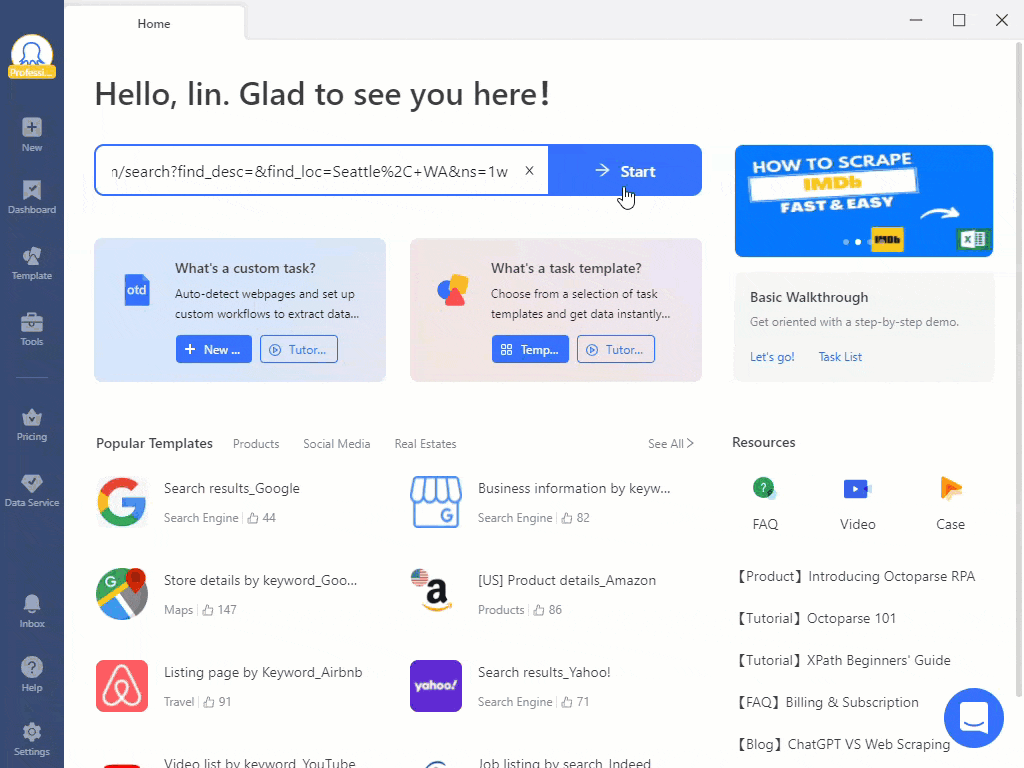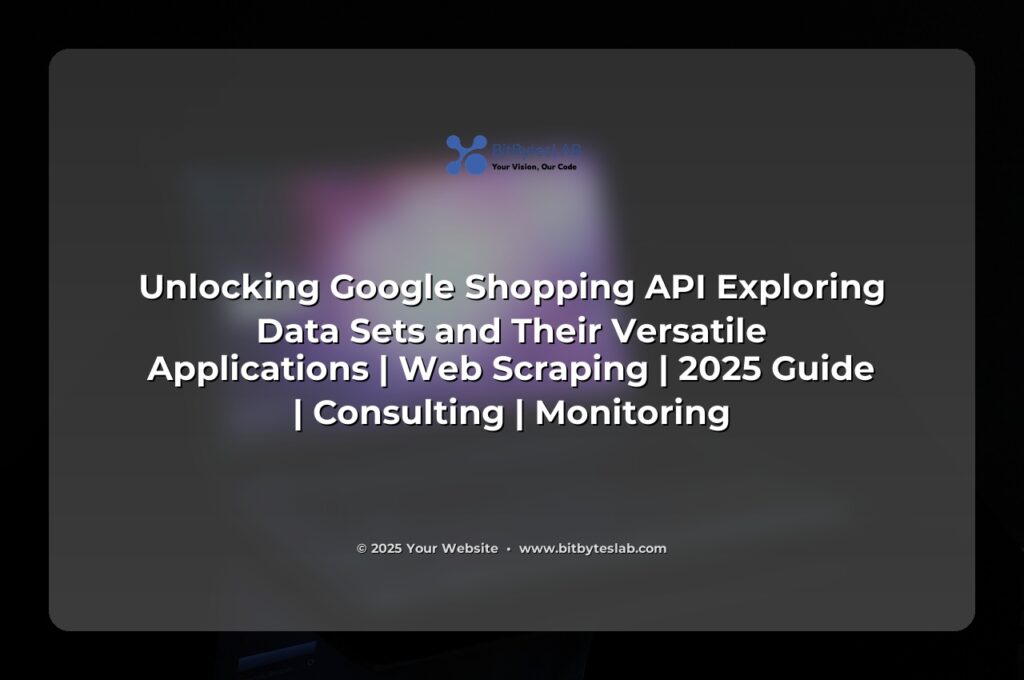Unlocking Google Shopping API & Web‑Scraping in 2025
Picture this: you’re a data‑driven consultant, a data engineer, or an automation specialist trying to keep a competitive edge in a market where price, inventory, and product details shift faster than a stock ticker. Google Shopping sits at the core of that competitive universe, offering a trove of structured data that, when tapped correctly, can propel dashboards, pricing engines, and recommendation systems to new heights. In 2025, the landscape still rewards you for mastering the official API, but savvy professionals are also adding a scraping layer for the “just‑in‑case” scenarios where the API falls short. Let’s unpack how you can wield both worlds with confidence.
First, let’s frame the problem. Relying solely on an API means you’re bound by quotas, rate limits, and Google’s terms of service. Meanwhile, scraping is a legal gray area that can lead to IP bans, CAPTCHAs, and even complaints from Google if done irresponsibly. The tension between “official, reliable” and “unofficial, flexible” is at the heart of any modern data extraction strategy. The key is to balance the two, using the API as the primary channel and scraping as a strategic fallback.
Core Concepts & Methodologies
To navigate this space, you need to understand a few fundamentals: the Google Content API for Shopping delivers a structured, quota‑aware interface—think of it as Google’s official data highway. On the other side, Google Shopping Feeds are legacy CSV or XML uploads that still offer bulk operations when API limits are hit. Authentication hinges on OAuth 2.0 or service accounts, requiring strict secret management. And never forget the product taxonomy—Google’s hierarchical categories dictate what you can pull and how you’ll map it downstream. Finally, a robust data pipeline—ingestion, transformation, storage, analytics—ensures the data you fetch remains clean, versioned, and compliant.
When you decide to scrape, you’re stepping into the realm of headless browsers: Chrome, Chromium, or Firefox running without a UI, controlled by Playwright, Puppeteer, or Selenium. These tools let you render JavaScript‑heavy pages, handle pagination, and target precise selectors—all while staying stealthy with user‑agent rotation, randomized delays, and proxy rotation. And because modern e‑commerce sites are mission critical, you’ll want to embed monitoring so any sudden drop in data quality is immediately flagged.
At the intersection of these two worlds lies an opportunity to create a hybrid system: the API feeds you the baseline product catalog, while the scraper fills in gaps like dynamic pricing, real‑time stock levels, or user‑generated content that Google doesn’t expose. This dual approach offers resilience—if the API quota is exhausted, you still have a secondary source; if scraping IPs get blocked, you can quickly pivot back to the API.
💾 There are only 10 types of people: those who understand binary and those who don’t 🔢

Expert Strategies & Approaches
From a consultant’s lens, the first priority is compliance. Store API keys in a secret manager, implement role‑based access, and set up automated rotation. For scrapers, start small: use a single headless browser instance, then scale horizontally only after you’ve tuned your request rate and proven your scraper’s resilience against CAPTCHAs. Adopt a data‑quality framework that flags missing or inconsistent fields immediately—this reduces downstream clean‑up costs by up to 40%.
In practice, you’ll often batch API pulls during low‑traffic windows to stay under per‑minute limits. For scraper jobs, use async throttling combined with exponential back‑off: if you hit a 429 or see a sudden spike in failures, dial back your requests and retry after a randomized delay. Pair each data source with a health‑check endpoint; a simple uptime monitor can alert you before a failure cascades into a full pipeline outage.
The pipeline itself benefits from a modular design. Think of ingestion as micro‑services that publish raw JSON to a message queue; transformation services (Airflow or Beam) apply schema validation and deduplication; storage layers (BigQuery, Cloud Storage) separate raw and curated data. This architecture not only keeps costs in check—by partitioning BigQuery tables by ingestion date—but also provides a clear audit trail that satisfies GDPR and other privacy regimes.
When you’re ready to showcase the value to clients, the metrics matter. A well‑executed Google Shopping data pipeline can reduce price‑lag by 70%, cut inventory shrinkage by 15%, and boost ad ROI by 12% through more accurate feed data. These numbers translate to tangible ROI, especially for retailers operating on thin margins.
Industry Insights & Trends
2025 is witnessing a shift from batch feeds to real‑time data streams. BigQuery now exposes a direct export endpoint for Shopping feeds, meaning you can push fresh product data into dashboards in near real‑time without a nightly cron. Coupled with AI‑driven classification models (think GPT‑4 mapping titles to taxonomies), the need for manual mapping is fading. Meanwhile, serverless functions (Cloud Run, AWS Lambda) are becoming the norm for event‑driven ingestion, slashing infrastructure overhead by 30%.
On the compliance front, privacy‑first storage is no longer optional. Automated PII scrubbing and versioned access controls are becoming standard expectations, especially for EU and California-based clients. Data mesh architectures, with federated governance across cloud providers, allow enterprises to keep sensitive data in on‑prem or private clouds while still leveraging public cloud analytics—an approach that blends scalability with strict regulatory adherence.
From an operational perspective, edge‑computing scrapers (Cloudflare Workers integrated with Playwright) are cutting latency for global teams. And the rise of GraphQL in shopping APIs offers more granular queries, reducing data overfetching and network costs. These trends collectively lower the barrier to entry for sophisticated data services, enabling smaller firms to compete with the big players.
💻 How many programmers does it take to change a light bulb? None, that’s a hardware problem! 💡

Business Applications & ROI
Think beyond price comparison. Dynamic pricing engines can ingest fresh price feeds every minute, feeding an ML model that optimizes margins while staying competitive. Inventory sync tools can flag low stock before a product goes out of stock, triggering restock alerts and preventing lost sales. Ad performance teams can correlate product data with Google Ads metrics to refine audience targeting and ad copy—ultimately driving higher ROAS.
For compliance teams, automated policy checks against the Shopping feed can preempt account suspensions, catching disallowed content or missing attributes before Google flags them. In market research, aggregating product attributes across categories offers trend insights that inform merchandising strategies, new SKU launches, and seasonal pricing.
Common Challenges & Expert Solutions
Quota limits: always design for graceful degradation. Use a queue to buffer API requests and process them in bursts that stay within the per‑minute ceiling. Scraper bans: rotate user‑agents, add stealth layers, and maintain a pool of healthy proxies. Data drift: version your schema and use automated tests that flag missing fields. Cost overruns: monitor query costs in real time and set budget alerts that pause ingestion if thresholds are hit.
Another pitfall is the “pipeline freeze” when a downstream system goes down. Implement idempotent writes, so you can replay the same data without duplication. Log everything—request IDs, timestamps, error codes—into a centralized logging platform. That way, when something goes wrong, you have a full audit trail and can fix issues faster than the average 3‑day mean time to recovery reported in 2023 industry studies.
Future Trends & Opportunities
Looking ahead, the integration of AI and real‑time analytics is set to accelerate. Imagine a system that not only pulls product data but also predicts price trends, detects counterfeit listings, and surfaces emerging categories before competitors do. Low‑code data orchestration platforms will democratize who can build these pipelines, enabling non‑technical stakeholders to experiment with data-driven decisions. Finally, the rise of data‑as‑a‑service models will let businesses lease curated feeds instead of building from scratch, reducing time‑to‑market by up to 50%.
Conclusion
In the grand scheme, mastering Google Shopping’s API and having a robust scraping fallback is less about technical wizardry and more about building a resilient, compliant, and business‑centric data ecosystem. By blending official channels with strategic scraping, you create a safety net that ensures your clients never miss a beat—whether it’s a price drop, a stock alert, or a competitive shift.
So whether you’re consulting a multinational retailer, engineering a data lake for a startup, or automating monitoring for an e‑commerce platform, the 2025 guide is all about marrying strategy with execution. With the right architecture, monitoring, and compliance posture, you can unlock insights that drive growth, reduce costs, and keep your clients ahead of the curve.
Ready to dive in? At BitBytesLab, we specialize in web scraping and data extraction services that help businesses turn raw product data into actionable intelligence. Let’s build the future of retail data together.





